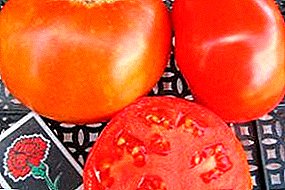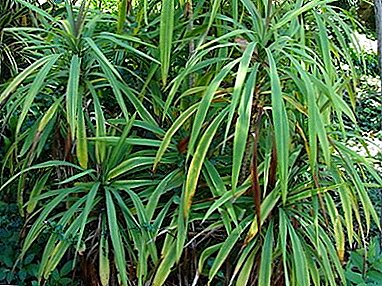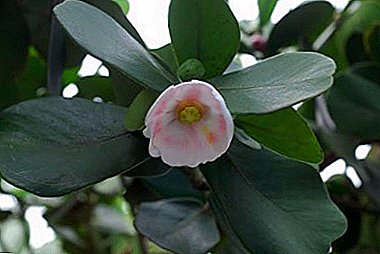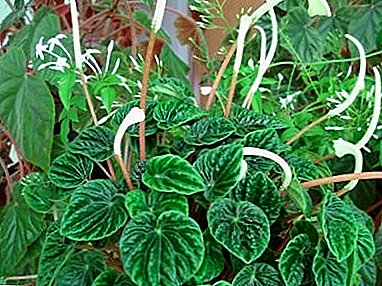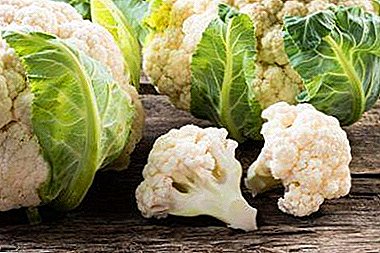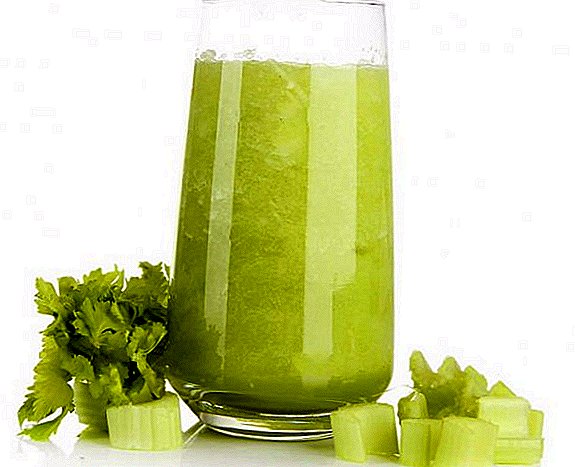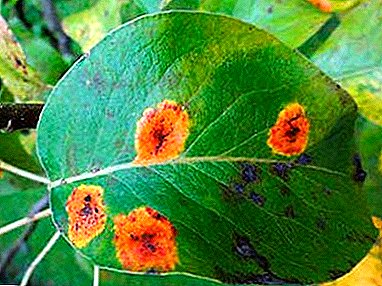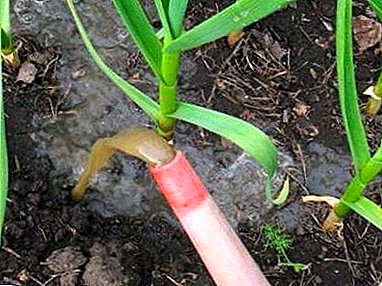
Garlic is a perennial herb of the Amaryllis family. From ancient times it was cultivated in India (used for medicinal purposes), and in antiquity it was cultivated by the Romans, Assyrians, Egyptians and even the Greeks. Currently, garlic continues to be one of the most popular vegetable crops around the world. This is primarily due to its pungent taste and characteristic odor caused by the presence of special chemicals in the plant.
It should also be noted that garlic is famous not only for its taste, but also for its beneficial properties: its juice contains biologically active substances that have antifungal and anti-inflammatory effects, strengthen the immune system, as well as many vitamins. The good news is that such a healthy vegetable can be grown on your own garden bed. To obtain a bountiful harvest, it is important not only to observe the technology of planting garlic, but also to organize competent care for it in spring and summer. Let's take a closer look at whether it is necessary to fertilize garlic and how to do it correctly.
The importance of timely fertilization
In order to get a good harvest of garlic, it is necessary to fertilize the plant., as it needs a lot of nutrients. If you do not ensure its timely feeding, it will grow slowly and may even die from a lack of minerals and chemicals in the soil.
It is especially important to provide the plant with necessary substances like during the “hibernation” period (before planting in the fall, winter garlic needs fertilizer in order to survive the winter and start growing in spring), as well as during the period of rapid growth of the bulb (so that it grows large).
What does it depend on?
Plant nutrition depends on:
 Time of year. In the spring, garlic needs nitrogenous top dressing (to increase green mass), in the summer, fertilizer helps to grow and form a large and strong head, in the fall, in order to survive the winter and rise in early spring.
Time of year. In the spring, garlic needs nitrogenous top dressing (to increase green mass), in the summer, fertilizer helps to grow and form a large and strong head, in the fall, in order to survive the winter and rise in early spring.- From the growth phase of the plant:
- During hibernation (autumn). Fertilizer is applied to ensure that the plant could survive the winter and sprout in the spring.
- The period of growing green mass (spring). In this phase, garlic needs additional nutrition. As a rule, 2 supplements are made with a break of 2 weeks. Top dressing is carried out using nitrogen fertilizers.
- The period of formation of the head (summer). Potassium-phosphorus fertilizers are required for the formation of garlic heads.
- From what type of fertilizer is used by summer resident. You can use only organic fertilizers (manure, compost, wood ash, yeast, salt), and you can mineral (bought in a special store).
What can be fertilized in spring and summer to grow large
Consider how you can feed garlic in early spring after winter and in summer so that it grows well, does not turn yellow and does not hurt.
Organic fertilizer
They are considered environmentally friendly. These include:
- Wood ash. It disinfects the earth and contains a large amount of potassium and phosphorus, reduces the acidity of the soil. Fertilize beds with ashes in the autumn, bringing it under digging. It well reduces the acidity of the soil, which is detrimental to garlic. In summer, ash can be used during feeding, in June in the form of infusion.
- Manure (cow, horse, chicken manure). Contains a lot of nitrogen, which is necessary for the growth of green mass. You can use both fresh manure (with autumn fertilizer) and rotted.
- Compost. This is a burned-out compound of fallen leaves, straw, grass, manure, etc. It contains many useful substances that plants need.
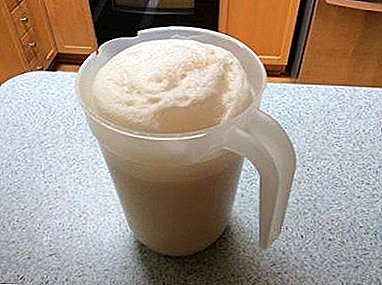 Kitchen salt solution, disinfecting the land and plantations, helping in the fight against harmful insects, accelerating the development of stems, providing the plants with the necessary trace elements. Disinfecting the land prevents the spread of parasites.
Kitchen salt solution, disinfecting the land and plantations, helping in the fight against harmful insects, accelerating the development of stems, providing the plants with the necessary trace elements. Disinfecting the land prevents the spread of parasites.- Ammonia (ammonia), also prevents the growth of bacteria, helps to get rid of harmful insects, which serves as a source of nitrogen. It is desirable immediately after the emergence of shoots.
- Yeast. It is only necessary to keep in mind that in the process of fermentation potassium and calcium are actively consumed from the soil. Therefore, it is desirable to combine such top dressing with wood ash fertilizer as with a natural source of these microelements or any other appropriate (alternative) fertilizer.
- Herbal Infusion. It contains a lot of nitrogen. Garlic is fed until early summer.
Mineral fertilizers
Sold in special stores. We list them:
- Potash. For example, potassium salt, potassium chloride. They increase the yield, storage time and resistance to diseases.
- Phosphoric. These include phosphate rock and superphosphates. They accelerate the development of plants.
- Nitrogen. Urea, nitrate, ammonium sulphate. Promote plant growth.
- Complex. Nitrophoska, ammophos, diammofoska, nitroammofoska.
We recommend to watch a video about mineral fertilizers for garlic:
Step by step instructions on how to feed the plant after winter.
If you want the harvest to be rich and the garlic to be healthy and fully formed, it is important to follow the special fertilizer technology. It is suitable for feeding winter garlic, and for spring. The latter is planted in spring, so it does not need fertilizer in autumn.
The number of dressings and their type is calculated individually. It is important to take into account the composition of the mail, especially the climate and the general condition of the plant. The main thing is to take into account the basic laws: the plant needs nitrogen fertilizers in the spring when it grows, and there is a need for phosphate and potash fertilizers during the formation of the head.
Autumn feed
Helps survive the winter and sprout in the spring. Before fertilizing, remove plant residues from the beds and dig up the soil.. The following composition is suitable for feeding (per 1 sq.m.):
- 5 kg of compost or humus;
- 15-20 gr. superphosphate;
- 15 gr. potassium chloride or potassium sulfite;
- You can also add 2 more glasses of wood ash.
After applying the fertilizer, it is necessary to dig up the ground, level the rake and pour water with the addition of 1 tbsp. spoons of blue vitriol.
Important: It is impossible to feed garlic with nitrogen compounds in autumn. They can lead to untimely growth of green mass.
Spring feed
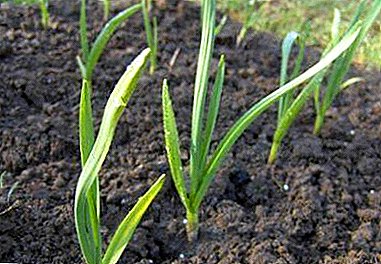 It acts as an additional food for the plant. Without it, it will be difficult for garlic to grow, especially if the land is poor in the necessary chemical elements. In total in the spring carry out 2 top dressings:
It acts as an additional food for the plant. Without it, it will be difficult for garlic to grow, especially if the land is poor in the necessary chemical elements. In total in the spring carry out 2 top dressings:
- Fertilizer is applied 1-2 weeks after the snow has melted (for winter garlic). For this, it is necessary to dissolve 1 teaspoon of urea and the same amount of potassium chloride in 10 liters of thermal water. To fertilize in the evening, before the main watering.
- Fertilizer is carried out 2 weeks after the first spring feeding. To do this, you can add nitroammofosku (1 ff. Spoon) and 0.5 liters of cowshed in 10 liters of warm water. Such feeding will serve as an active growth of green mass of the plant.
We recommend to watch a video about spring dressing of garlic:
Summer feed
It is carried out at the beginning of the formation of the heads, that is, around June.
To do this, dissolve superphosphate (2 tablespoons) in 10 liters of water. After applying the fertilizer it is necessary to pour garlic with ordinary water.
Summer feeding is carried out only after cutting the arrows of garlic and loosening the beds.
Conclusion
Garlic is not only very tasty, but also quite healthy vegetable. Many gardeners happy to grow it on your site. However, you should pay attention to the fact that garlic requires regular and timely feeding. Without it, the plant not only can not form a large head, but may even die from a lack of nutrients and trace elements.


 Time of year. In the spring, garlic needs nitrogenous top dressing (to increase green mass), in the summer, fertilizer helps to grow and form a large and strong head, in the fall, in order to survive the winter and rise in early spring.
Time of year. In the spring, garlic needs nitrogenous top dressing (to increase green mass), in the summer, fertilizer helps to grow and form a large and strong head, in the fall, in order to survive the winter and rise in early spring. Kitchen salt solution, disinfecting the land and plantations, helping in the fight against harmful insects, accelerating the development of stems, providing the plants with the necessary trace elements. Disinfecting the land prevents the spread of parasites.
Kitchen salt solution, disinfecting the land and plantations, helping in the fight against harmful insects, accelerating the development of stems, providing the plants with the necessary trace elements. Disinfecting the land prevents the spread of parasites.